Your 9-day all-inclusive photosafari starts at the Maun International airport where you will be greeted with a warm welcome by one of the friendly staff members. From there you will be escorted to a light aircraft for an amazing scenic flight to Central Kalahari airport. A luxury safari vehicle will then escort you to the campsite where you’ll receive a welcome drink – one of South Africa’s award-winning wines, craft beer or a famous local liqueur Amarula – and a briefing on daily activities and safety measures. Your glamping accommodation is a luxurious tent with a king size bed, and each tent has bathroom en suite.
You’ll have time to unpack your clothes and then head out for your first game drive in the top-of-the-range 4×4 game vehicle, where you could experience some of the magic of the desert areas. The Central Kalahari was made famous by Mark & Delia Owen’s book Cry of The Kalahari published in 1984 after several years of research on the Black-maned lions of the Kalahari. Game viewing is best during the dry season, from June to December, one truly gets to experience the diverse wildlife and wonderful scenery offering an amazing contrast to the rest of the country and one is able to rove throughout the pans.
Nights out under the warm African sky in a luxury tent let you breathe and experience the bush and its fauna and flora in a way you’ll never forget. Imagine watching the vibrant sunset with an Amarula (local liqueur), in hand, and eventually retiring to sleep under the stars, in complete silence, with a cool African breeze rustling through your tent.
Private chefs will cater for every meal in this all-inclusive trip while you enjoy 4×4 game drives in the comfortable game vehicle. See the Big 5, and experience unique animal sightings (such as honey badgers and Kori Bustards) with the experienced guides.
The safari vehicle comfortably seats six guests to ensure maximum comfort for the best game viewing and photography. As part of the luxury African off-road driving experience, the vehicle is kitted out with comfortable bucket seats, storage pockets, arm rests and camera charging points. You will also find reference books for further reading, and for the sometimes surprisingly chilly African mornings, fleece blankets and hot water bottles will be provided.
What to bring:
Camera DSLR / mirrorless
Lenses 300 mm or longer
Lens for landscape 16 - 35mm (preferably f2.8) - lenses need lens hoods
Cover for dust and rain
Tripod
4x Memory cards (32 GB or more)
Ideally also bring Laptop with Lightroom and / or Photoshop
Card reader
Lens cleaning kit
Note block and pen
Also important to consider:
Binoculars
Sun block factor 30 or higher
Cap / sunhat
Light walking shoes
Shorts
Swimming costume
Rain jacket
Warm jacket (fleece) - sitting on an open safari vehicle at sunrise can be chilly!
If travelling during winter (April - October), also bring windproof jacket and scarf. It can be very cold early morning and evening on the open safari vehicle!
It is essential that you travel with adequate medical travel insurance, which should also include special medical evacuation cover.



We will explore the desert on twice-daily game drives. One can see these wonderful large cats with their black manes lying around the water holes during the dry seasons waiting for their opportunity for an easy meal as antelopes come down to drink. Other predators include leopard, cheetah, black-back jackals and bat eared foxes, to name a few. The elusive honey badger, brown hyena, striped polecat, aardwolf and cape fox can also be sighted in the beautiful desert region.
The largest flying bird in the world, the Kori bustard, can be seen throughout the region as well as African Red-eyed Bulbuls, Namaqua and Burchell Sandgrouse, Dark Chanting Goshawk, Rock Kestrel and Tawny Eagle are regular sightings. Antelope such as the Springbok, Gemsbuck (Oryx) and Red Hartebeest frequent the area.
The annual migration of the Wildebeest and Zebra , similar to the great migrations in Kenya and Tanzania but on a smaller scale, takes place during the wetter seasons on the year around February and March depending on the annual rainfall. Here one can see the predators, such as lion, cheetah and leopard waiting for their opportunities to catch the offspring for an easy meal.
The pans in the east of the park don’t have much animal activity in the dry, winter months, but this is when their stark beauty is best appreciated. There will be many unique opportunities to bag some incredible images!



Each day at your photo safari camp will follow more or less this programme (excluding arrival and departure day):
Early morning Wake up with tea / coffees and snacks - Morning game drive: (3 hours)
A photo safari morning starts a little before sunrise! For many, this is a big challenge, but nevertheless imperative, in order to take full advantage of the golden morning light which embellishes most wildlife and nature images. This is also the time of day when most animals are active, so the mornings should give you some great opportunities for capturing striking images. Remember, there is more to wildlife photography than lions; e.g. "the little things"!
An early wake-up call is usually made approximately 30 minutes ahead of departure. This allows for a quick wash and a hot beverage just to get those creative juices flowing….
After a pre-check and briefing by your photo guide (including giving some suggestions for camera settings and a brief over-view of what to expect on the drive), we set off. Your guide is always available on the vehicle to provide constructive suggestions and individual help during the actual drive.
About midway through the morning drive we take a comfort / coffee break in a safe area, to allow guests to stretch their legs and enjoy a hot beverage and some biscuits/rusks etc
Your photographic guide will help you with the camera settings for each specific situation and condition. You need to understand the basic photography terms such as aperture, shutter speed, ISO, metering, drive modes, focus selection points, etc. It is also important to know where and when you should change these settings (with wildlife photography you may miss the special shot if you are fumbling with your camera looking for which button to adjust).
Topics of Importance for Wildlife Photography:
- knowing your subject (the more you know about your subject, i.e. animal, the more likely you are able to predict its whereabouts and actions)
- Getting the shot perfect in the field – without having to do lots of editing in Photoshop afterwards
- using RAW for maximum results
- how and when to use autofocus / manual focus
- controlling Depth of Field
- settings for night (low light) photography
- focusing on the eyes
- know what you want the image to say. Have the images got a special feeling? Do they tell a story?
- composition: Rule of thirds
- use a flash: during day and night
- mastering birds in flight
- importance of supporting your camera
The morning game-drive usually takes about 3 hours (depending on what we see), and we then return to the camp for a delicious brunch / late breakfast.
Between Breakfast/Brunch and Lunch/High Tea
After breakfast, photo safari guests may retire to a quiet, private corner of the camp to assess the morning results. There will be free time or optional lectures on editing (Photoshop / Lightroom) as well as photography tips and tricks, depending on the group and their preferences. Edit images for the presentation of your best 3 images (which will be held after dinner).
What else? How about read a book, sleep or just sit still and listen to the sounds of raw nature?
Late Lunch / High Tea
We meet again early afternoon for a light meal, before setting off on the afternoon Game Drive (minimum 3 hours). Similar to the morning game drive, we try to find our subjects to photograph. The photo-guide will help you with some tips and tricks for sunset and night photography, and using flash and lights to enhance your shot. Just before twilight, a safe area is located for evening sundowners, where alcohol or soft beverages are served with lights snacks. (Drinks on the drive are usually pre-ordered before the drive sets out).
After sundowners, the guests will experience driving in darkness with a vehicle spotlight to find interesting animals/owls etc, then returning to camp.
Return to lodge after Sunset - Dinner
Time for a quick freshen up before we meet for dinner. After dinner we meet for maximum 1 hour. We will discuss and evaluate the 3 chosen images per photographer, from the last 2 game drives. These images are displayed for the group to see, with each image being discussed as a group and critiqued by your photo guide. It is NOT a competition, but an opportunity to learn by gaining an understanding of what constitutes a good image.
Bed time: a well-deserved rest after this exciting day in the African Bush. Remember, early start tomorrow!



After having spent a few days in the Kalahari you will be treated to full day’s safari experience travelling through the desert to your next camp. A picnic style lunch, served under the shade of an Acacia tree. The dedicated camp staff will ensure that all your luggage is safely transported to Makgadikgadi Pans camp where you will spend the next few nights.
You will get to experience the diverse wildlife and wonderful scenery offering an amazing contrast to the rest of the country whilst roving through the pans. You might also get to witness large flocks of flamingos gathering by the thousands to feed in the pans.
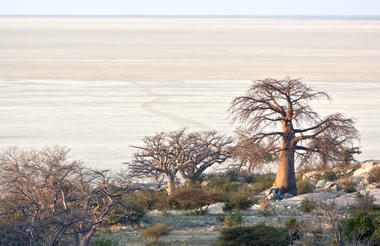
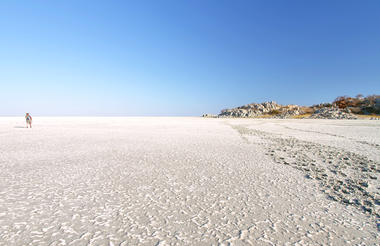
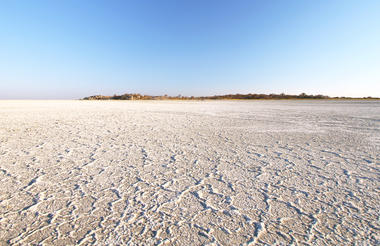
After having spent some days in Makgadikgadi Pans you will be treated to another full day’s safari. The camp staff will once again ensure that all your luggage is safely transported to Nxai Pans camp where you will spend the next couple of nights.
During your stay in Nxai pans you will head to the south where you can enjoy the extraordinary sight of the Baines’ Baobabs. The cluster of millennia-old baobab trees owes its name to the man known to have discovered them, Thomas Baines, a member of Livingstone’s expedition.



Nxai Pan National Park is the seasonal home to large herds of zebra and wildebeest. In the rainy season between December and April, the pan becomes grassy and attracts these animals in their tens of thousands, along with smaller numbers of gemsbok, eland and red hartebeest. And in turn, these attract the predators!
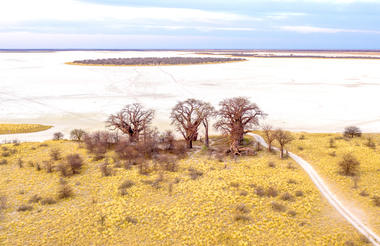
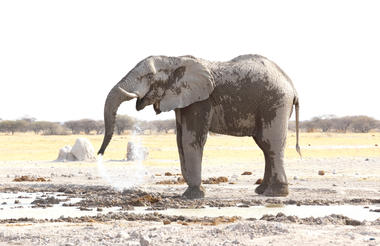
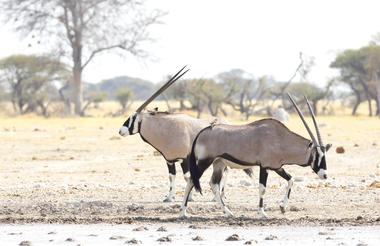
On day nine you will set out for your last game drive, maybe you will get a priceless shot on this drive? Upon your return to the camp, enjoy a light brunch before you set off to Maun airport where you will say “see you soon” to your guide, knowing you will long for the bush under the African sky. Your departure point back home on this trip will be from Maun International Airport.

